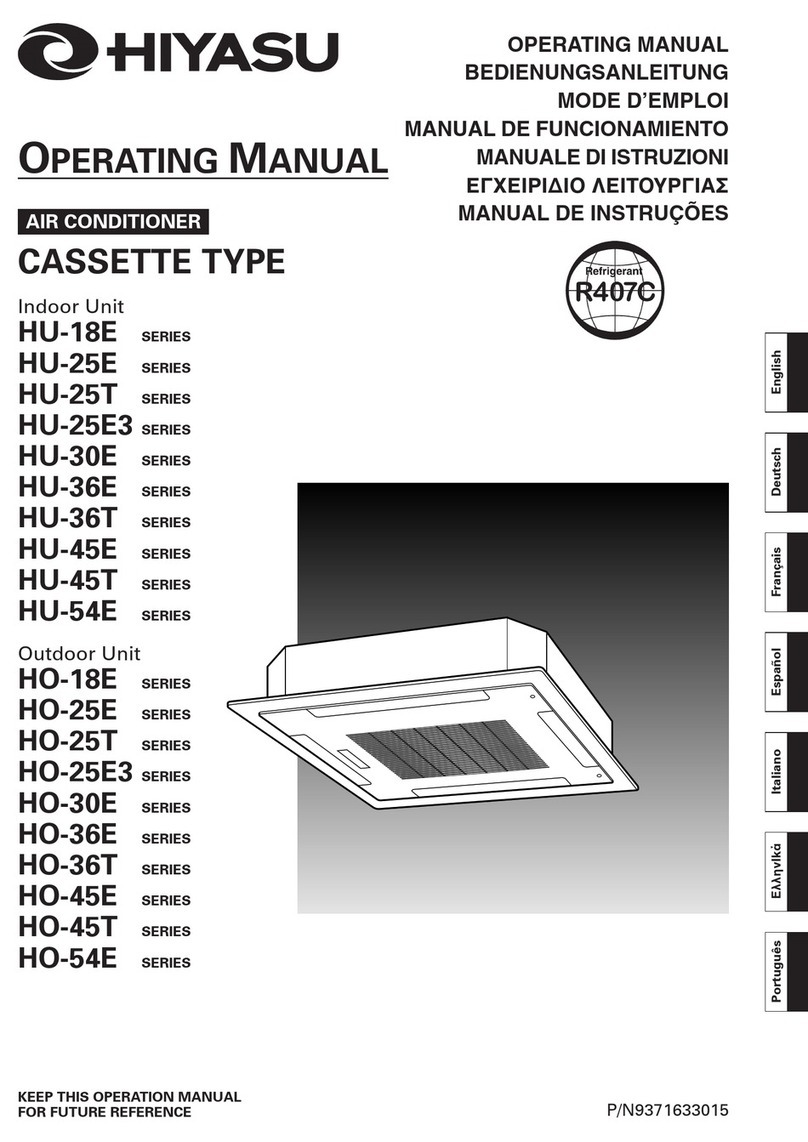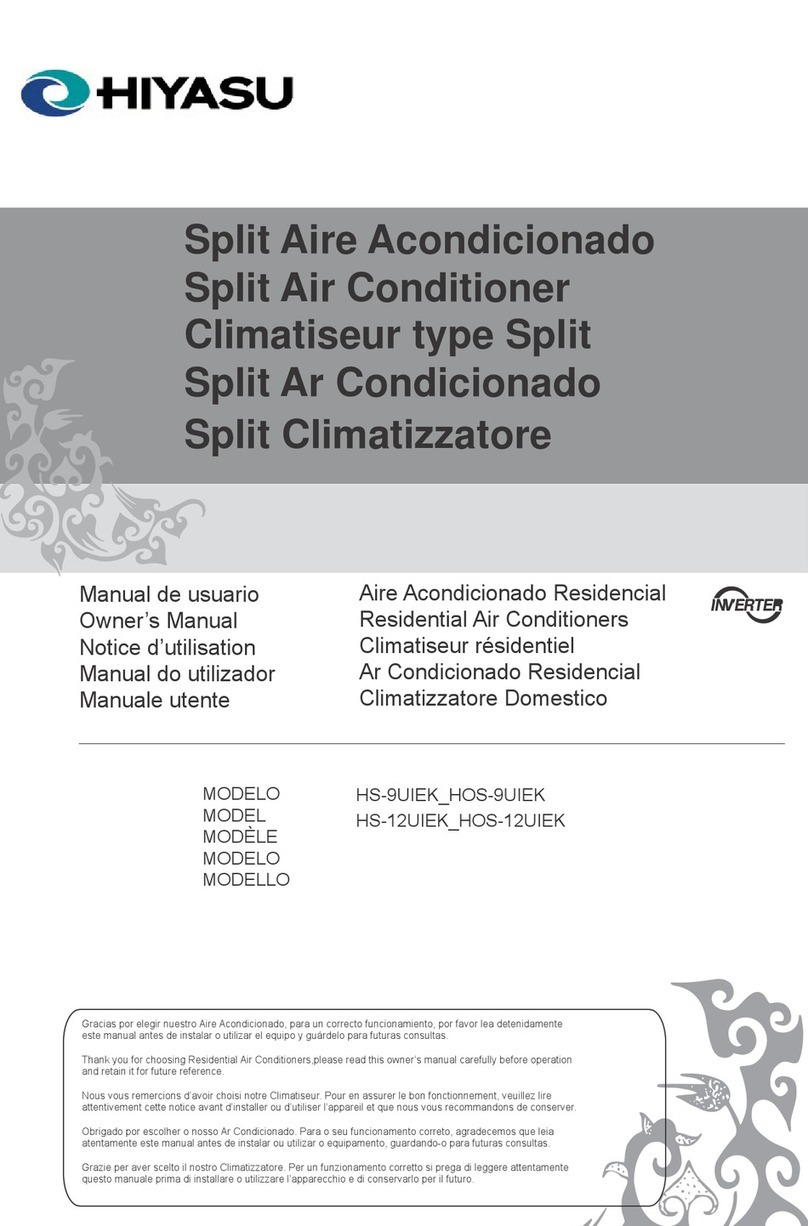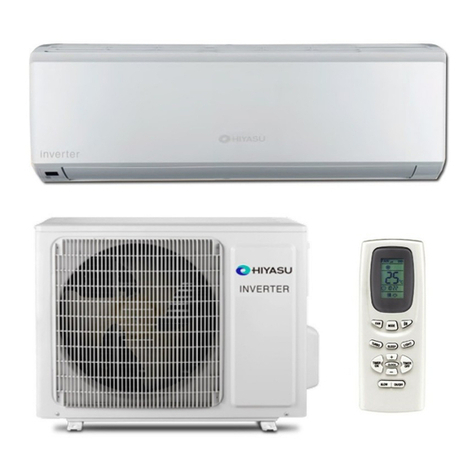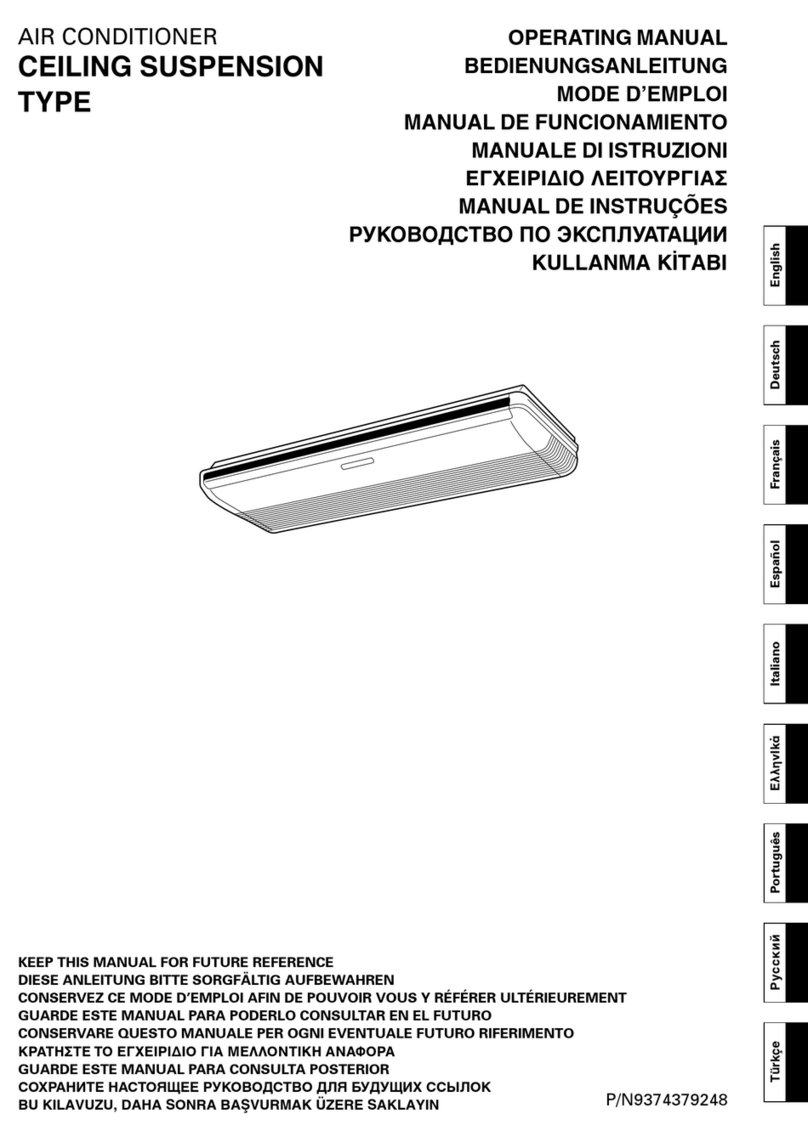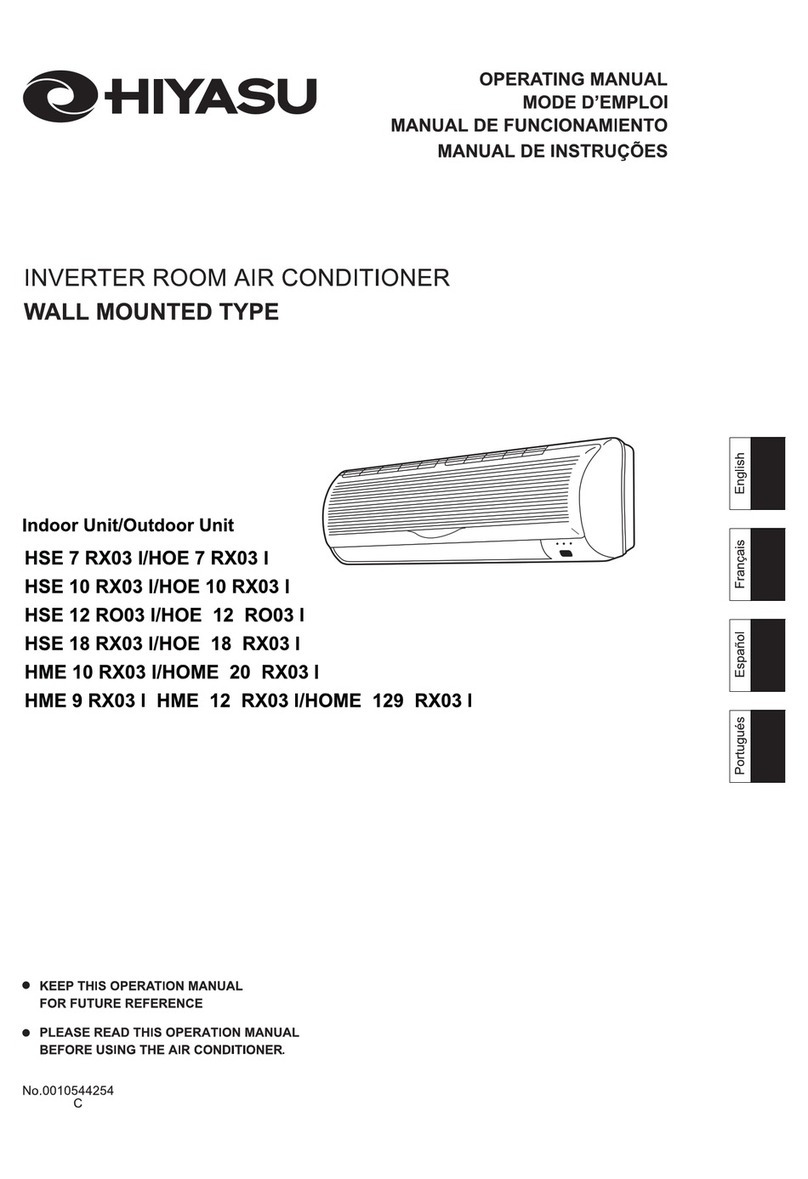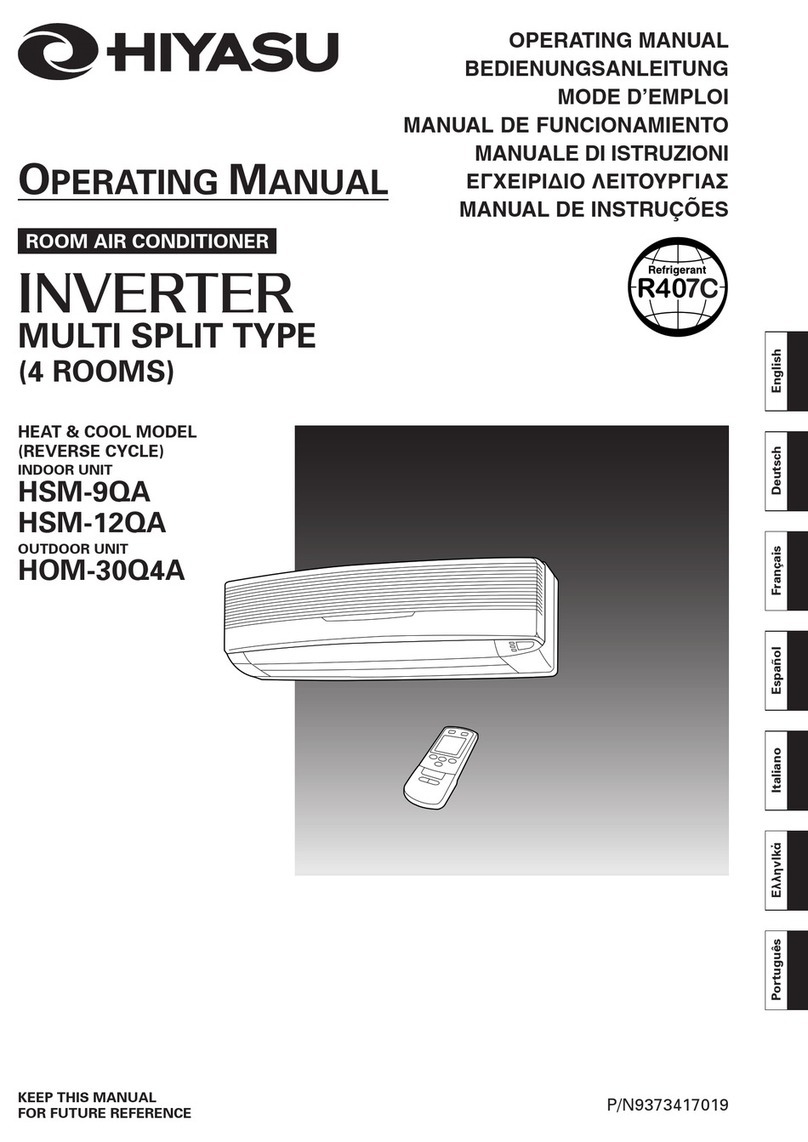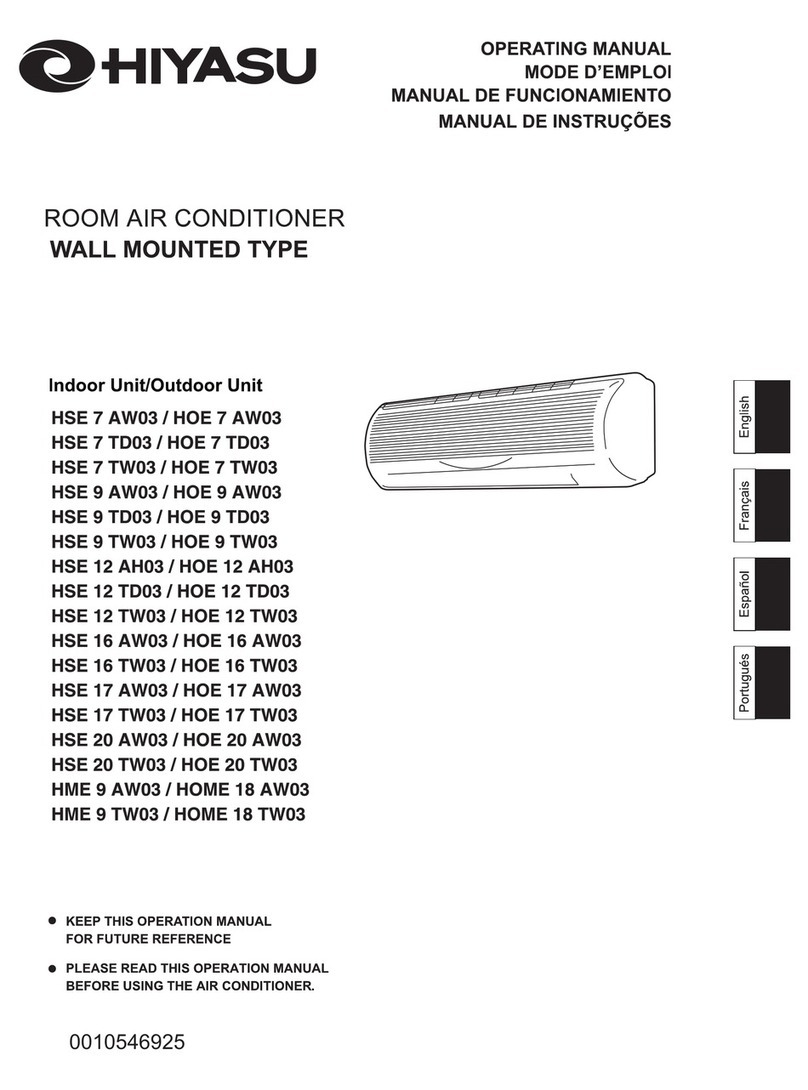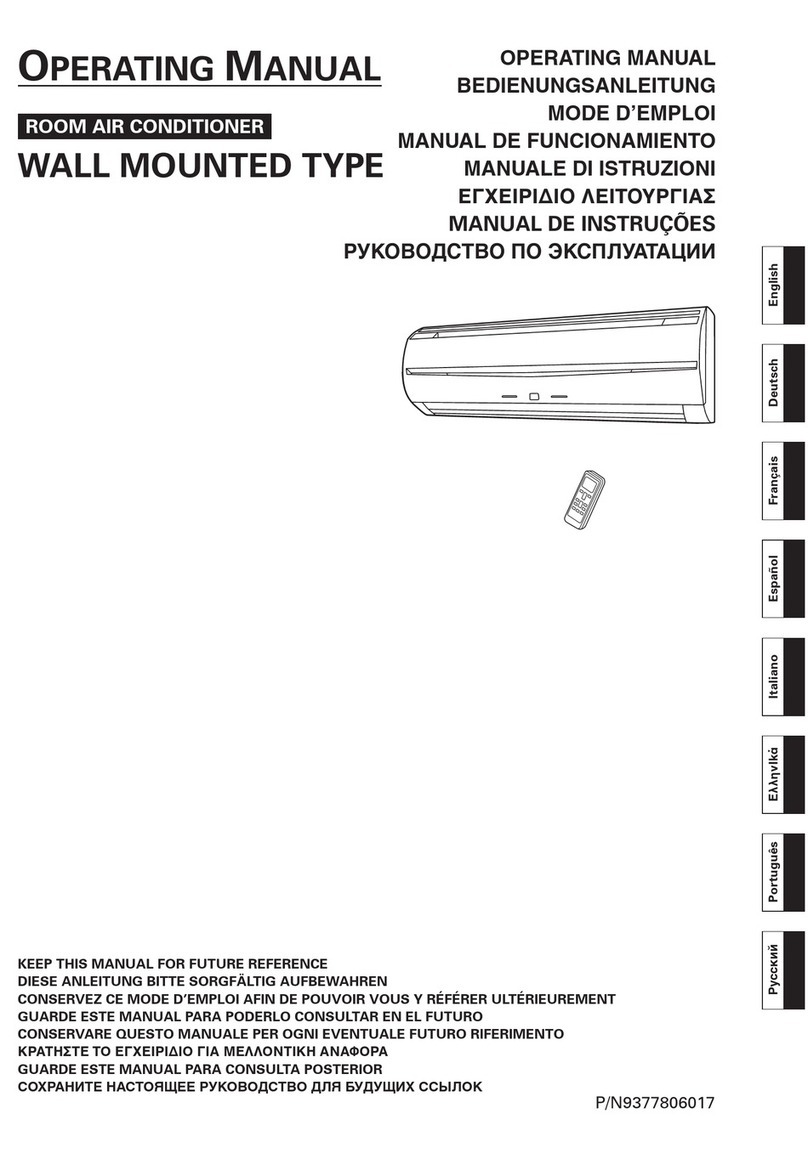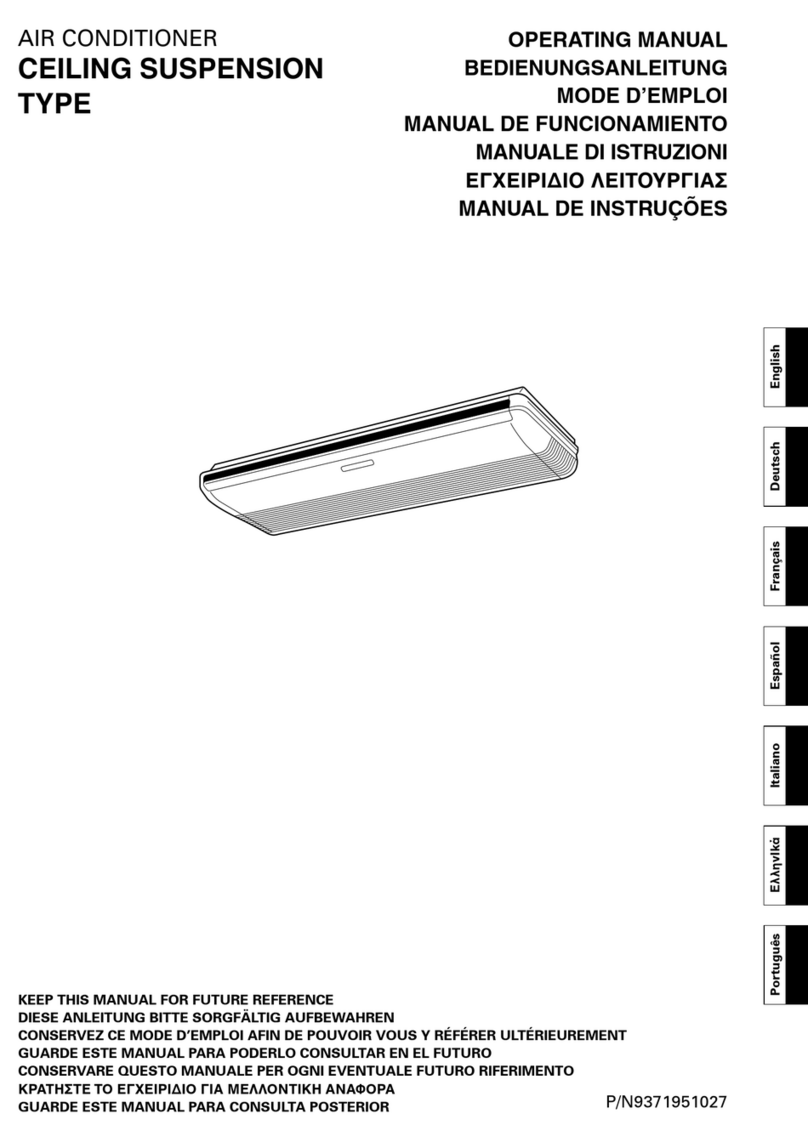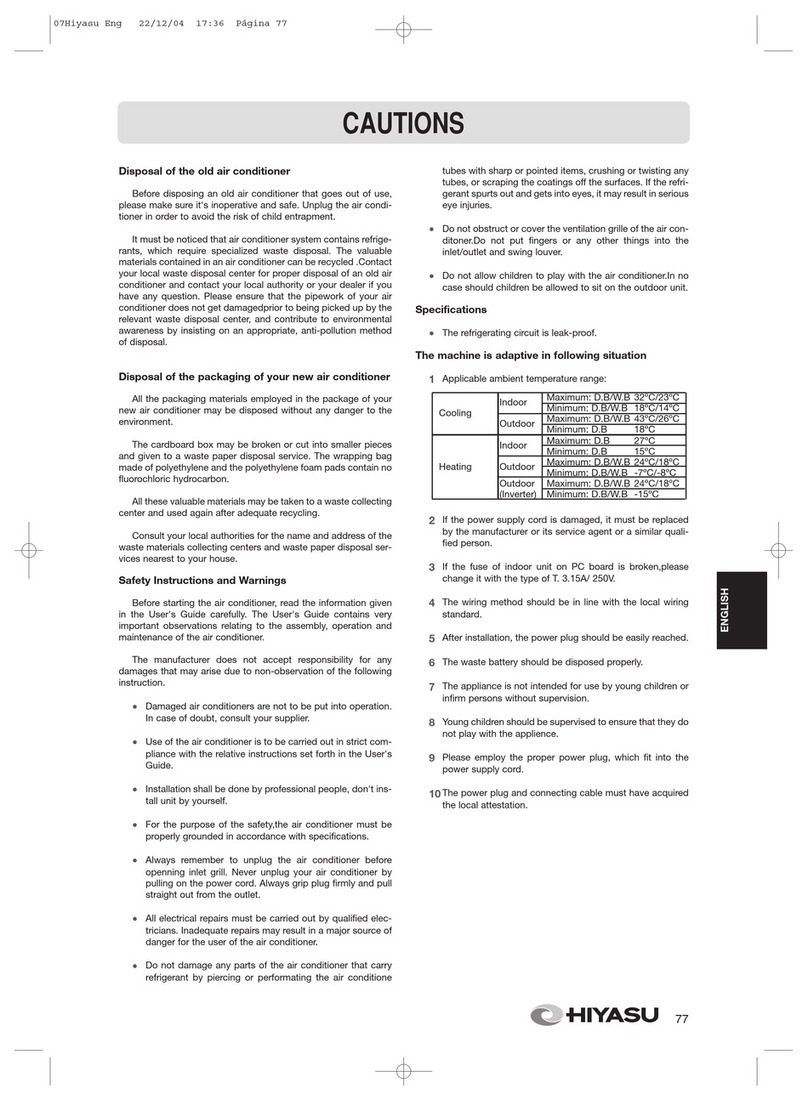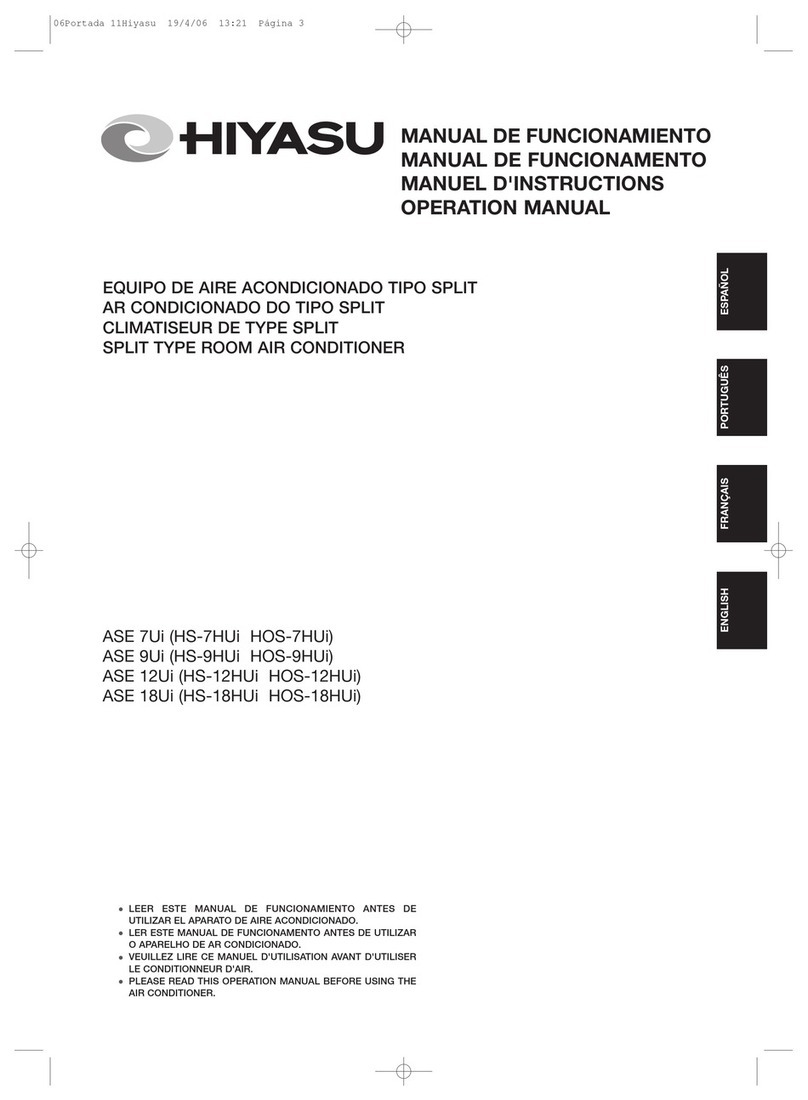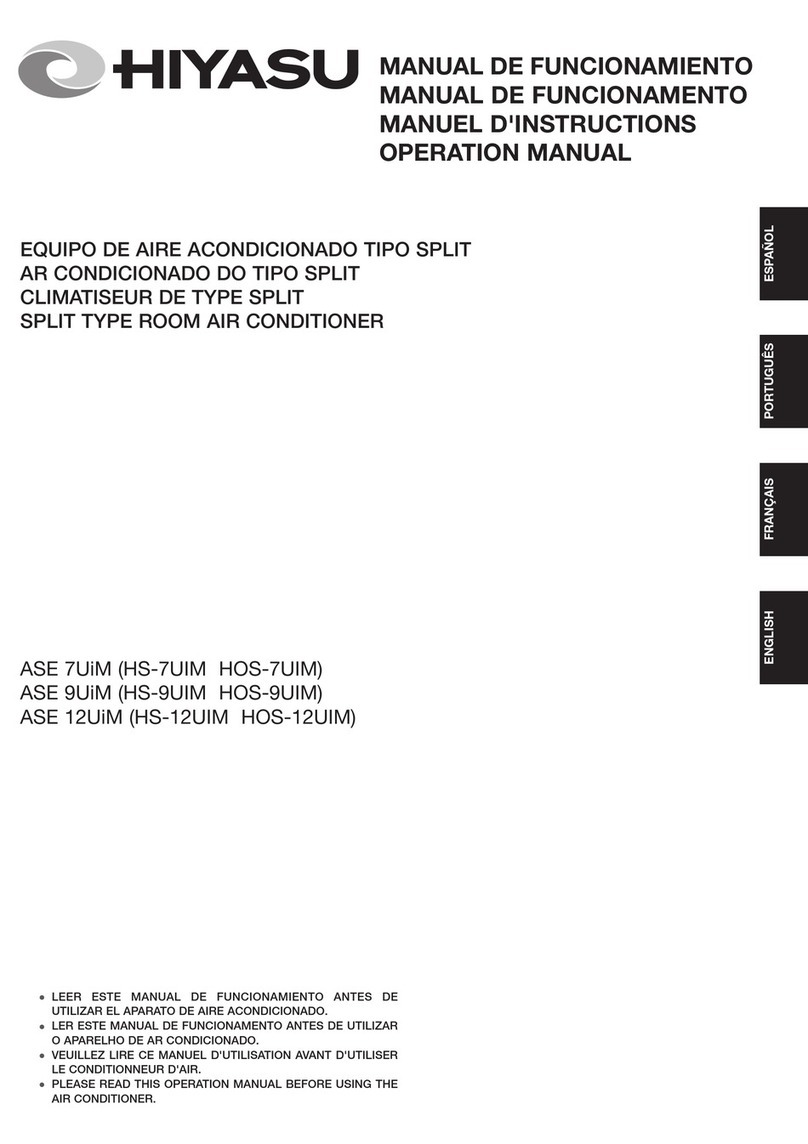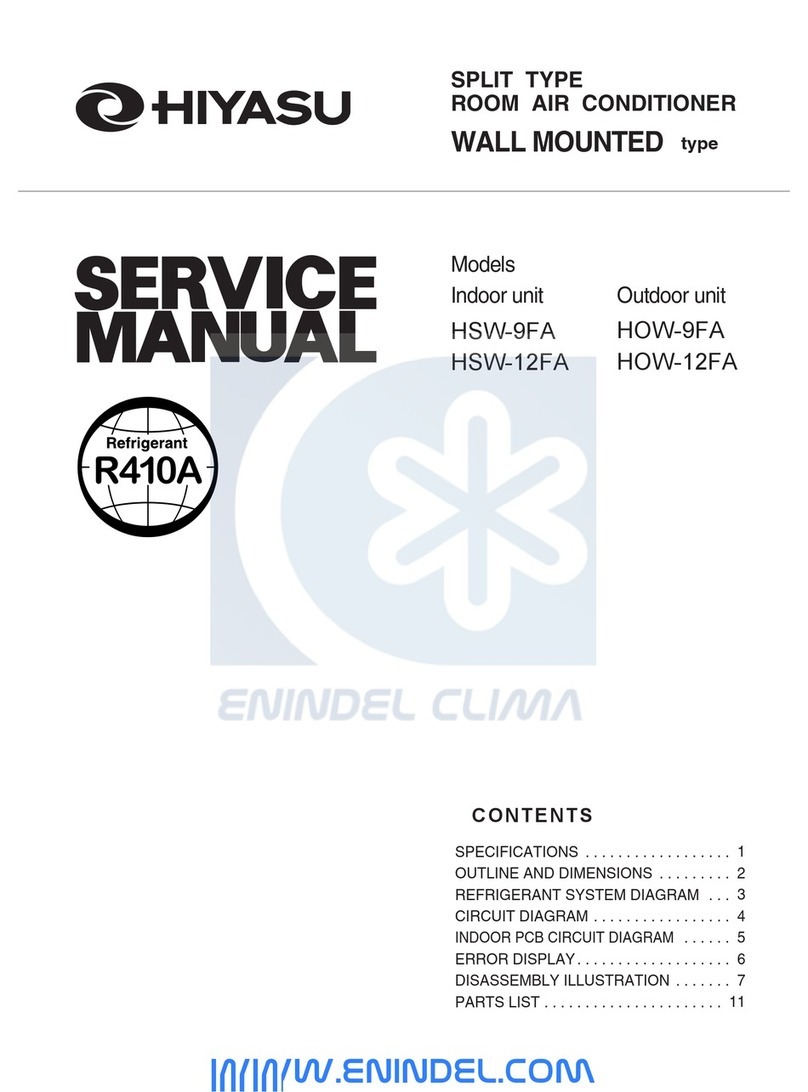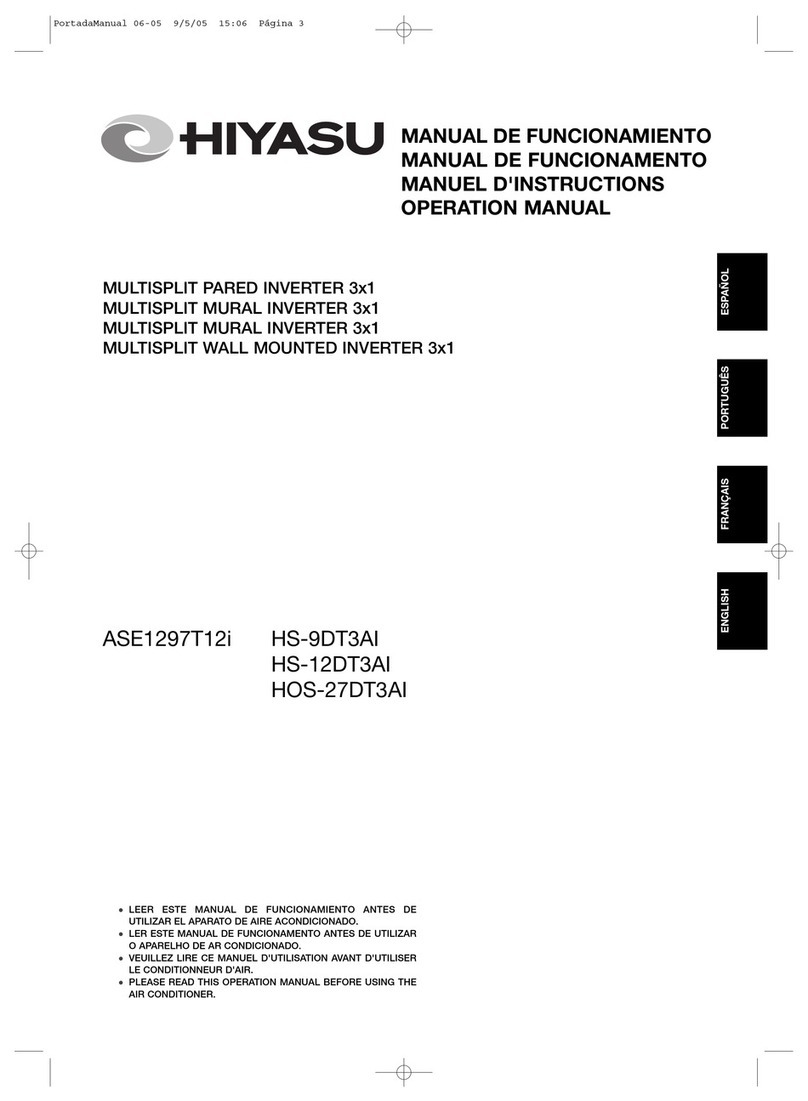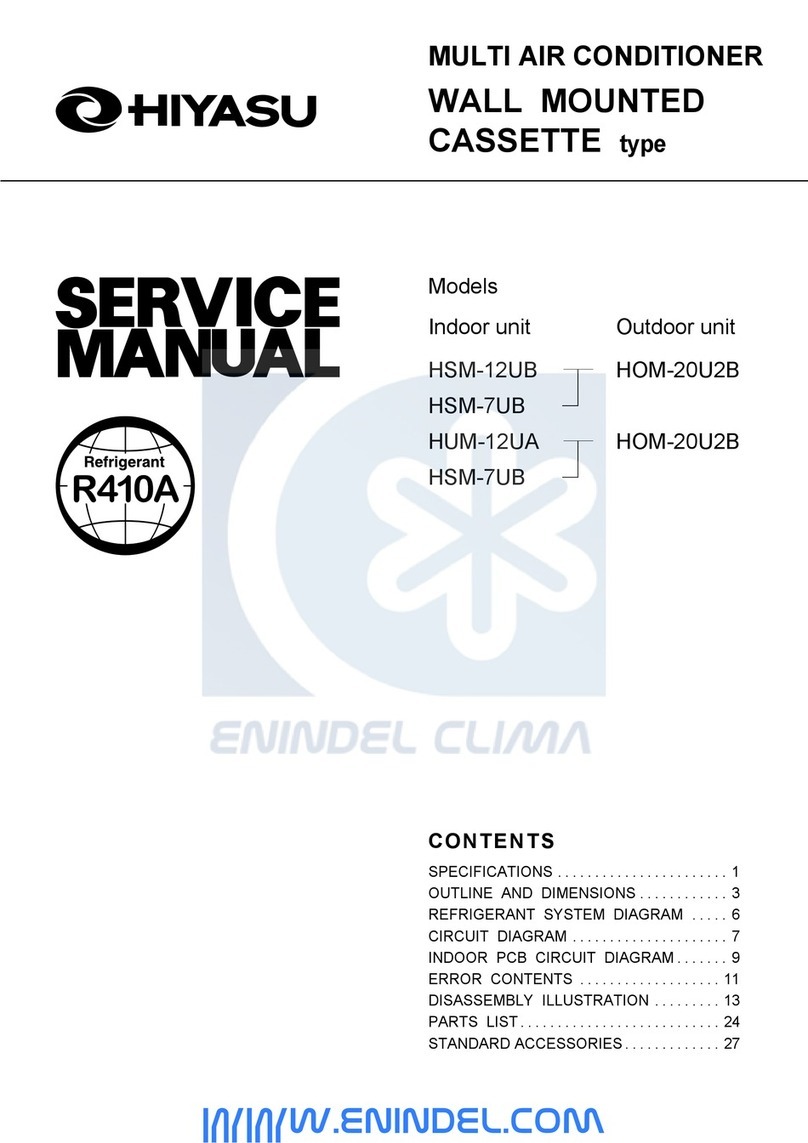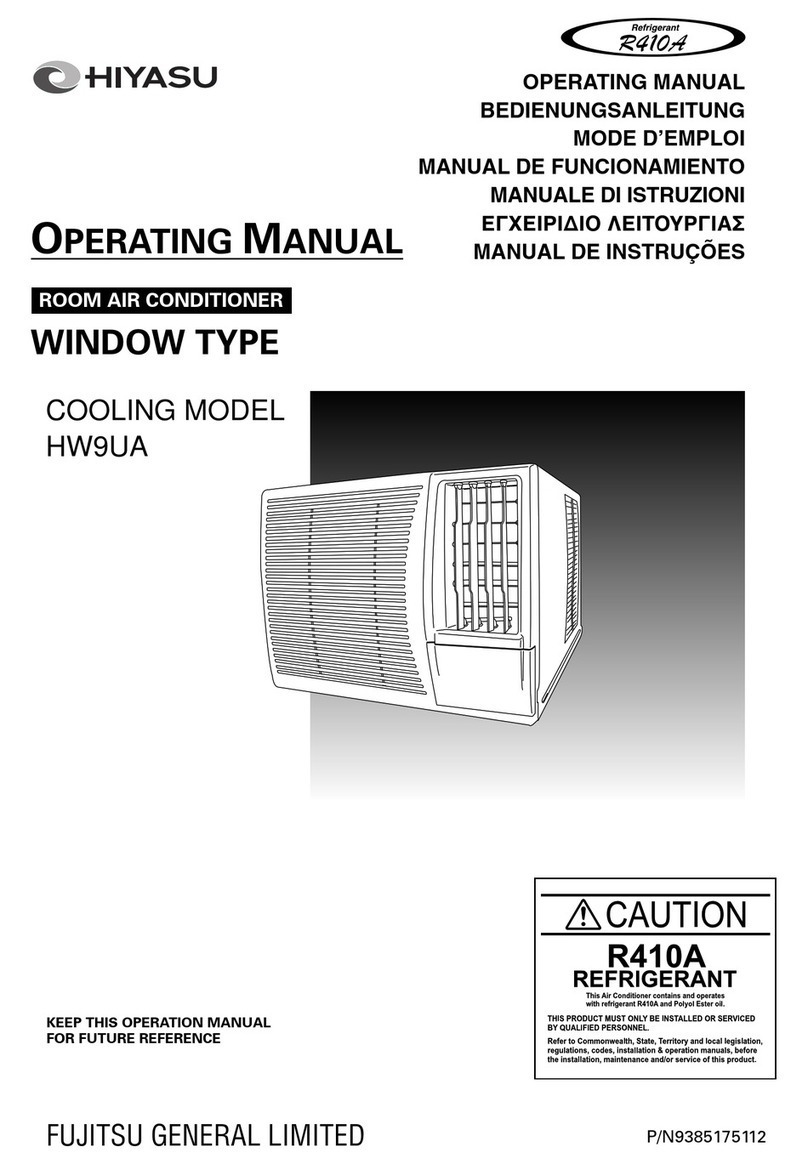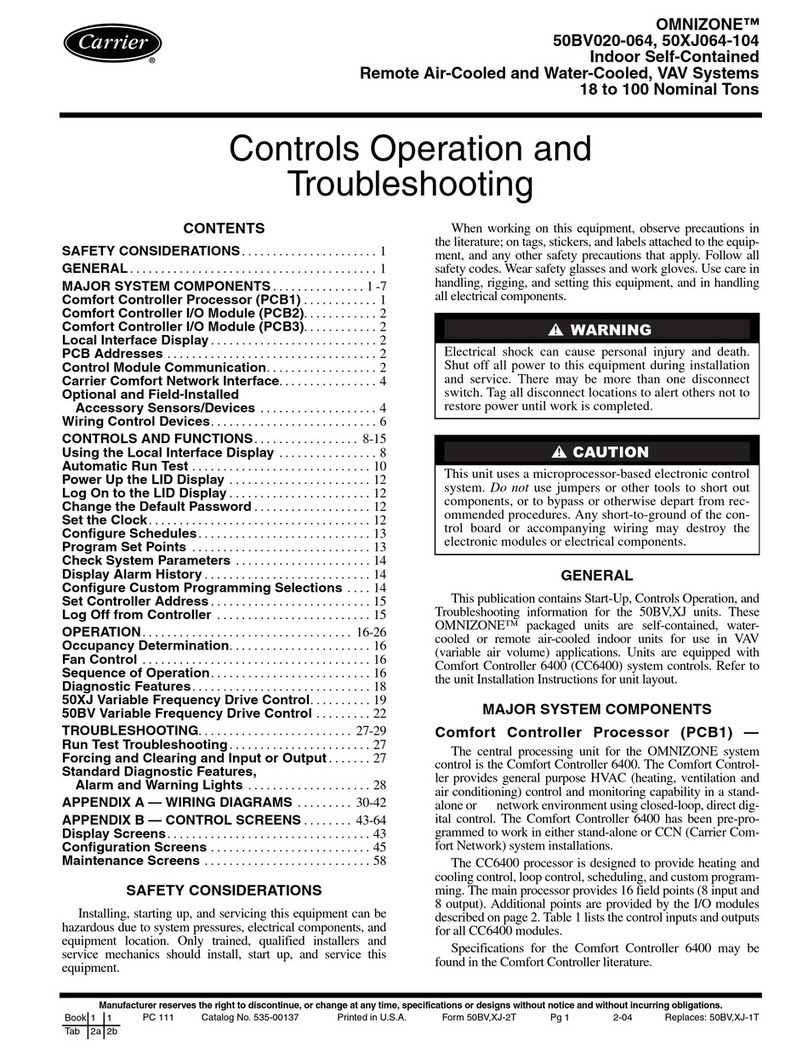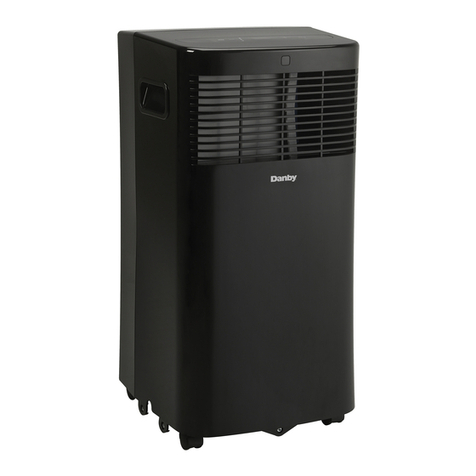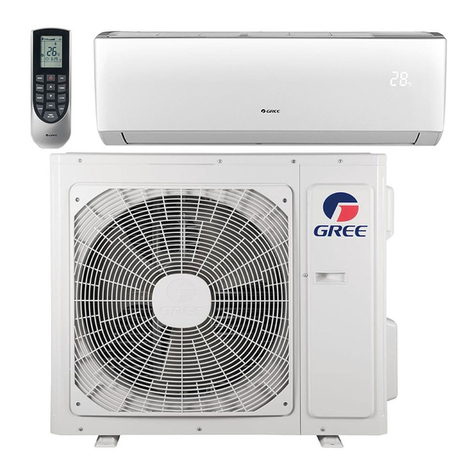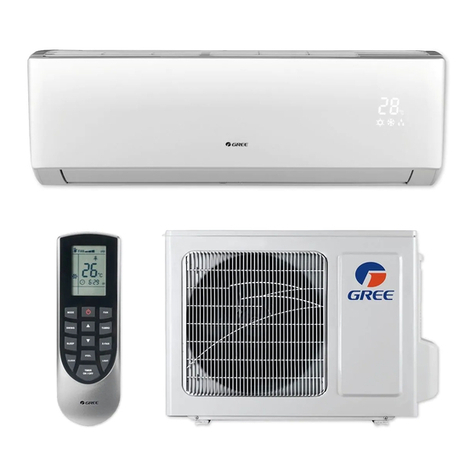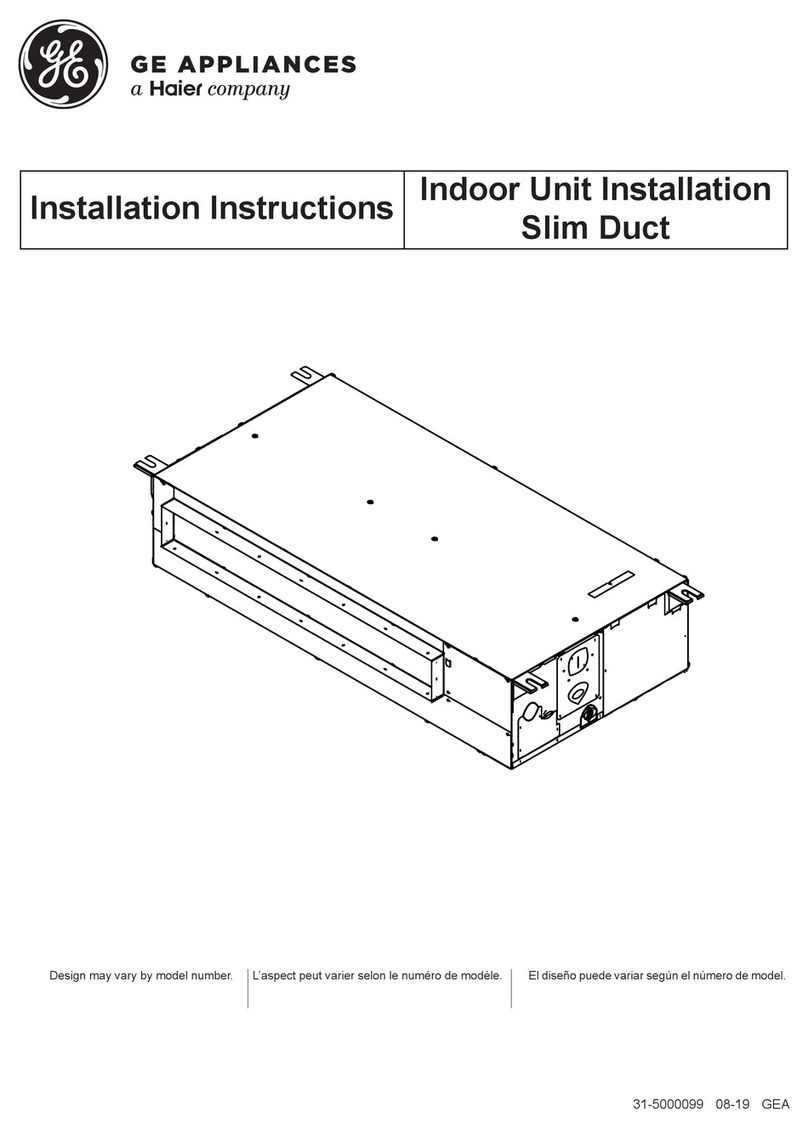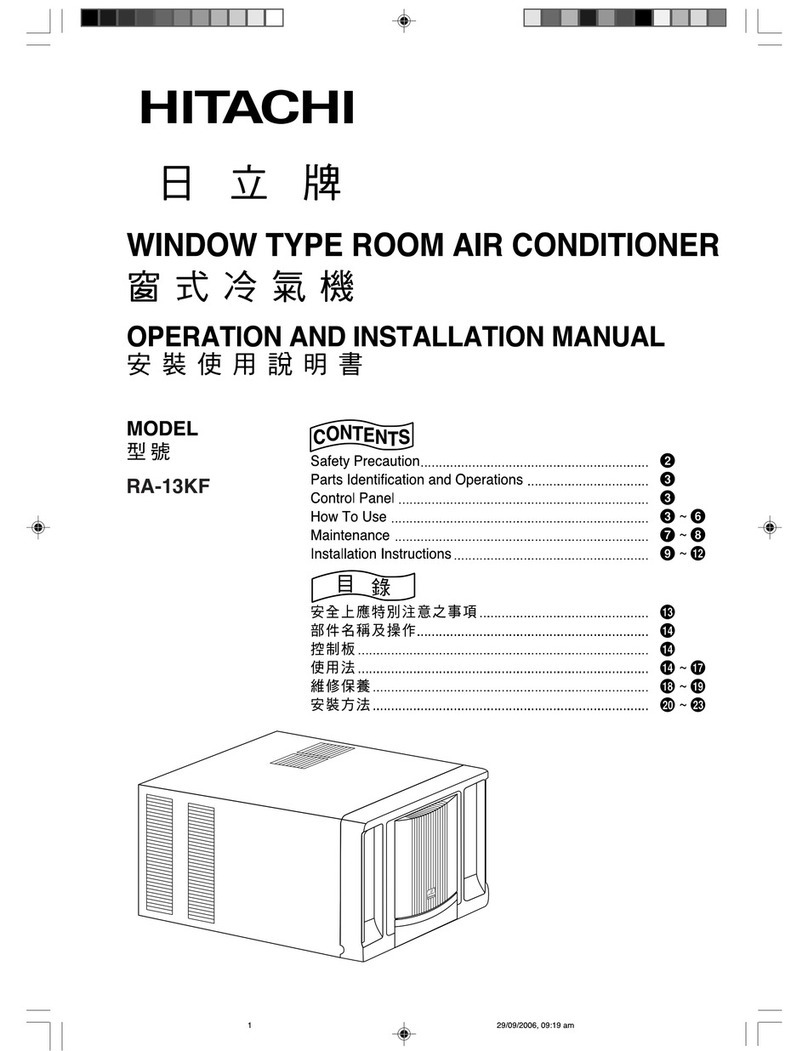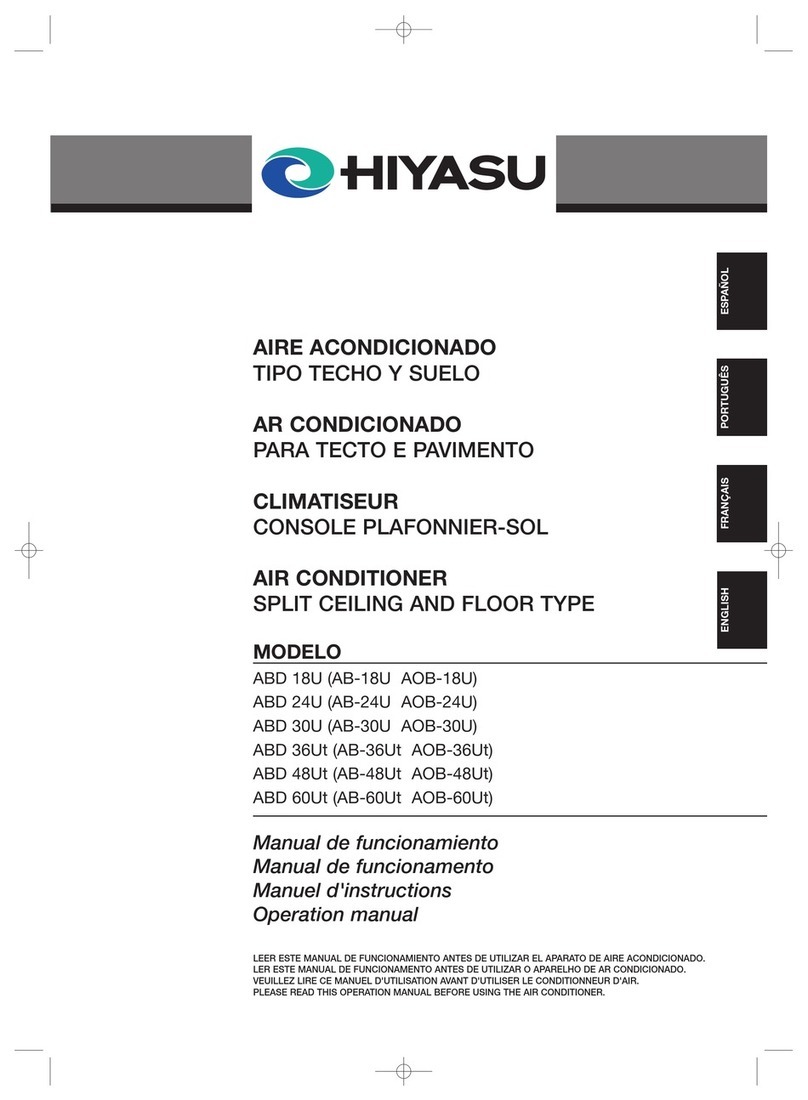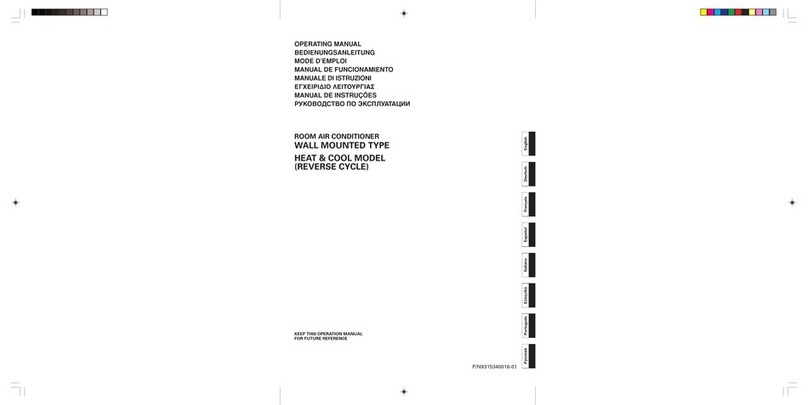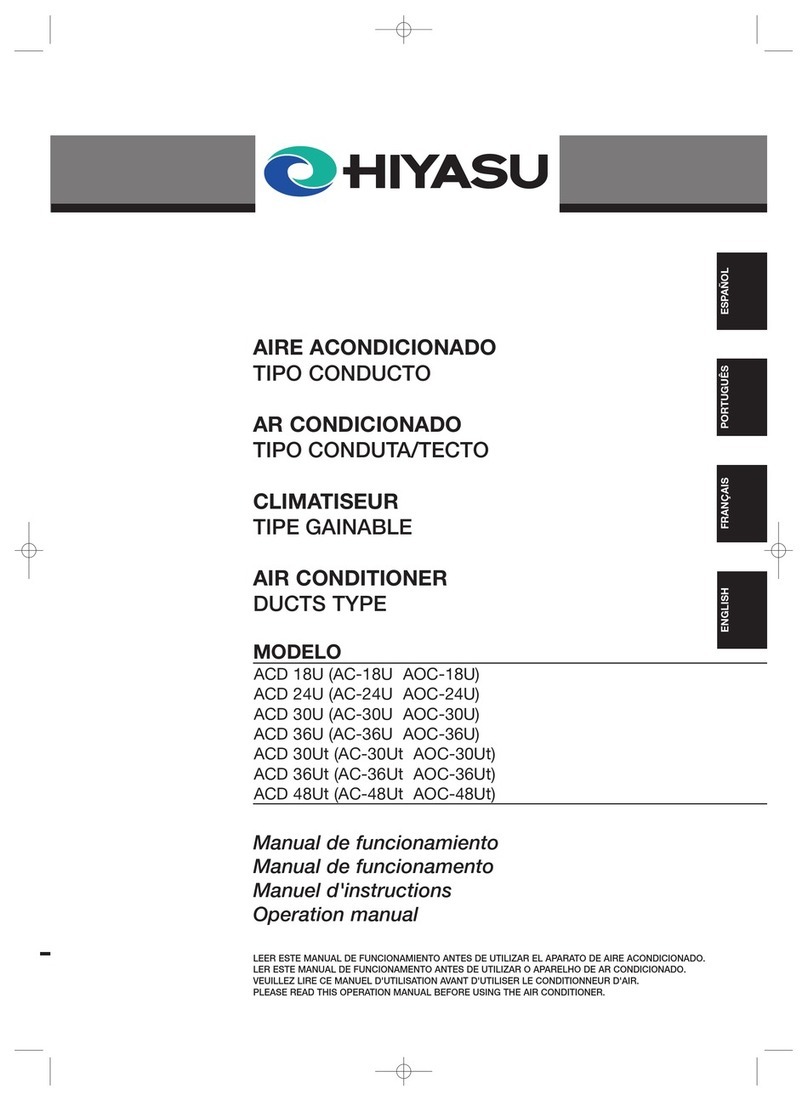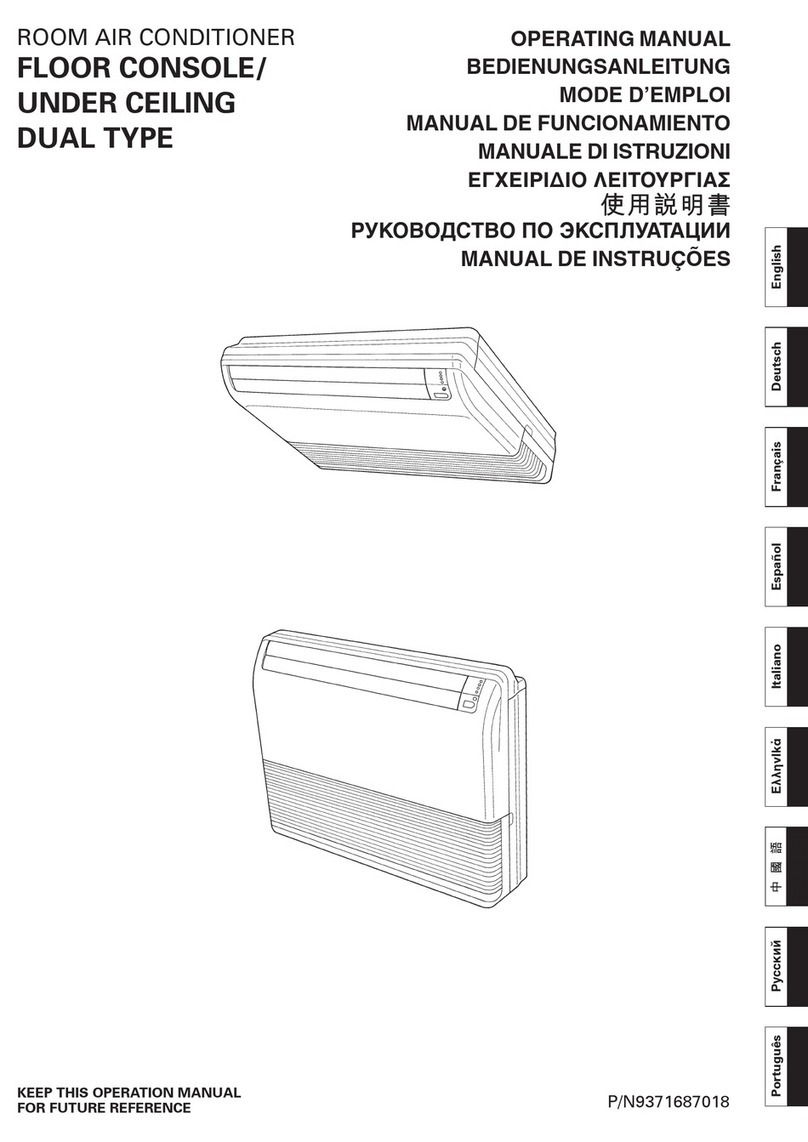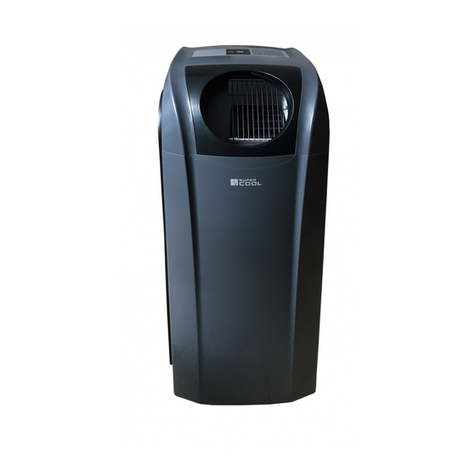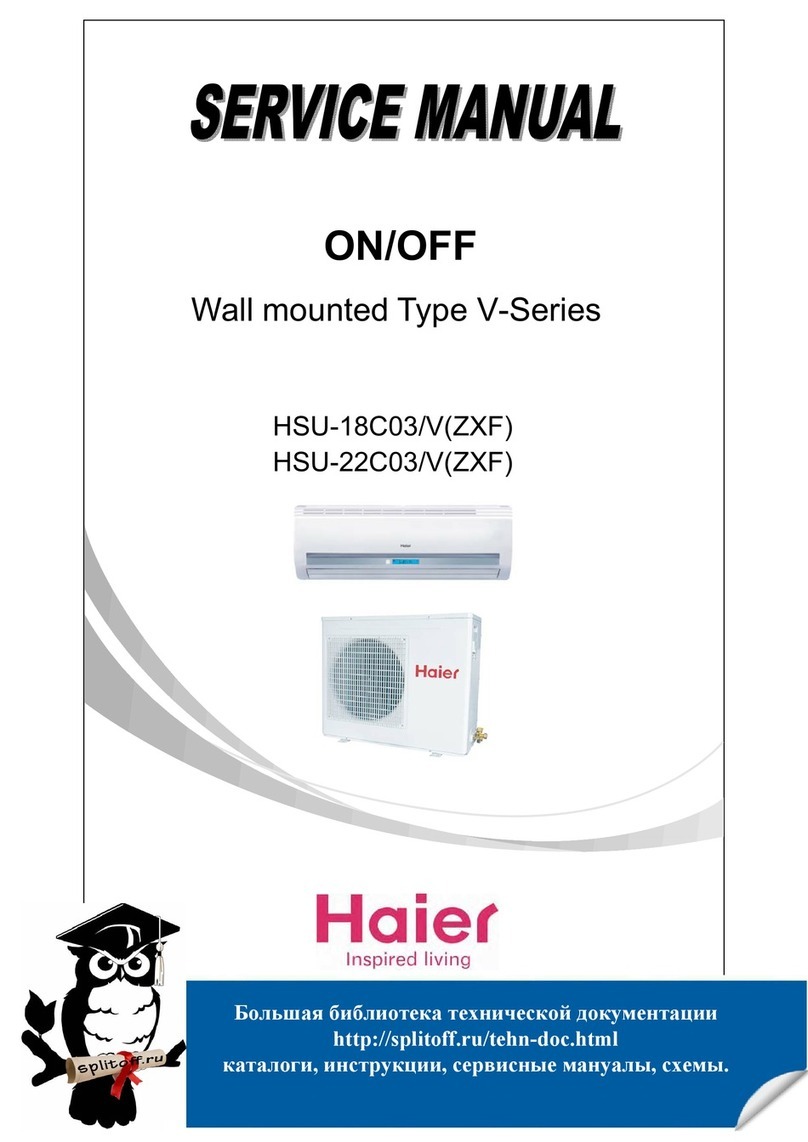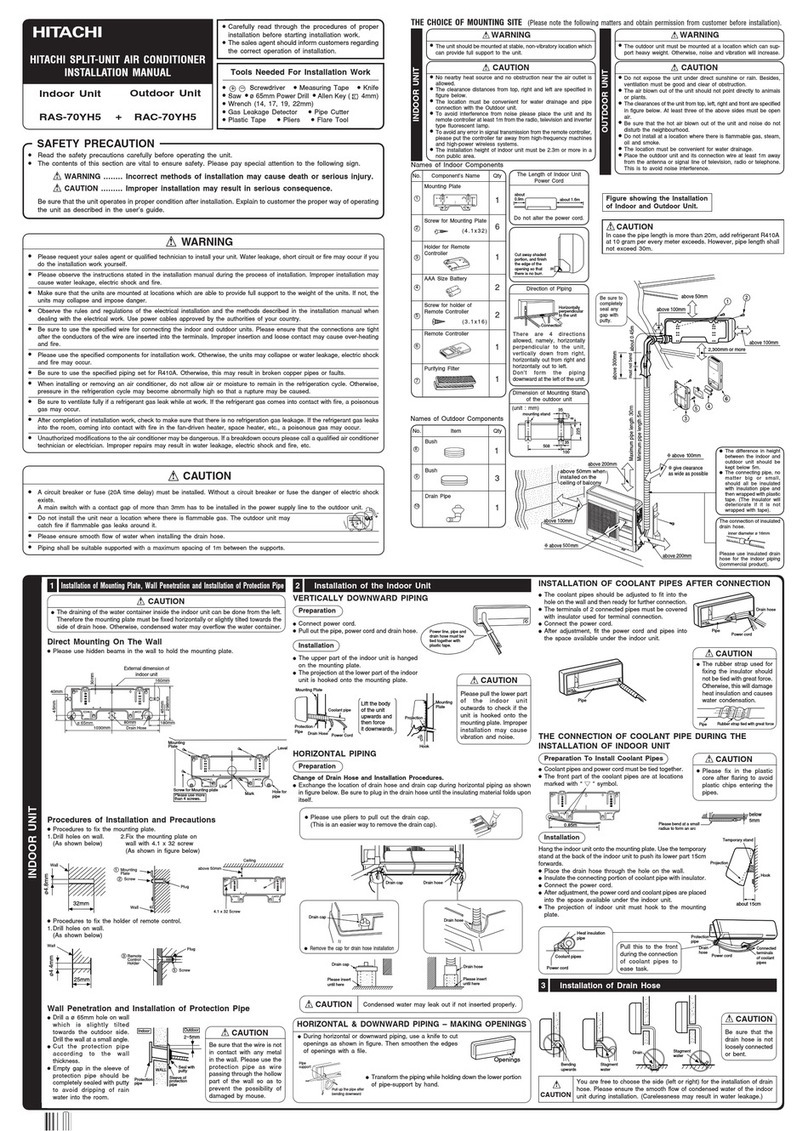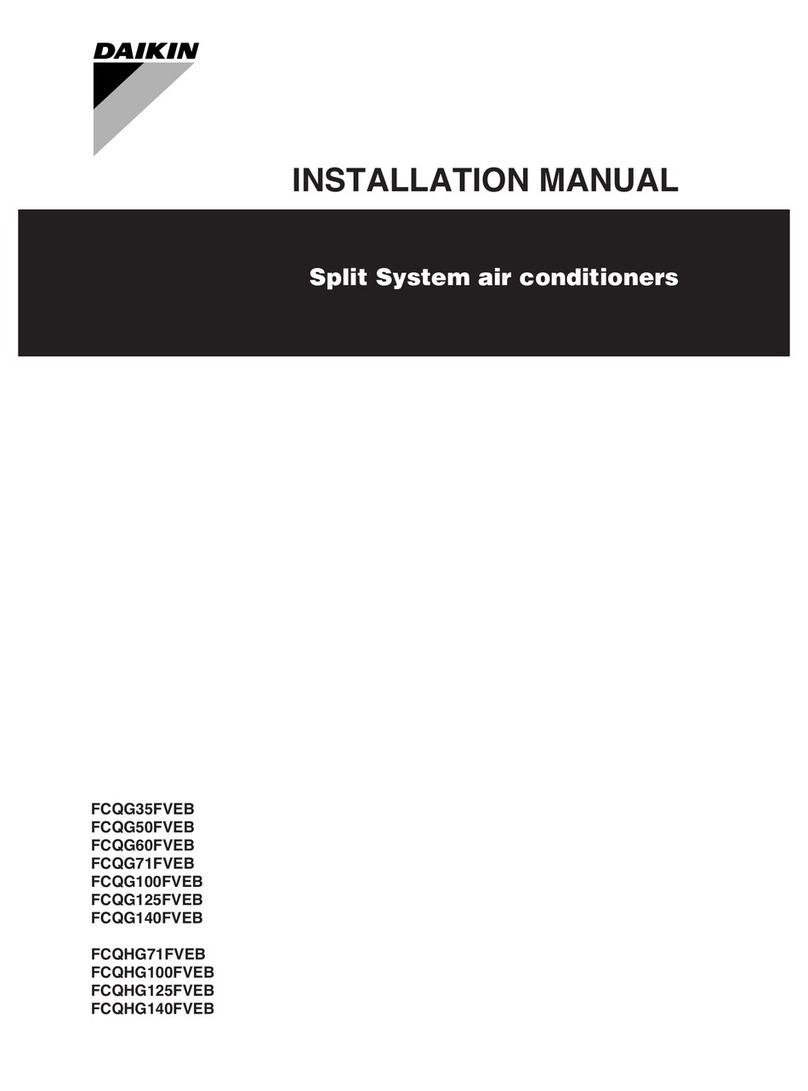
En-2
lDo not attempt to install this air conditioner by yourself.
lThis unit contains no user-serviceable parts. Always consult authorized service per-
sonnel for repairs.
lWhen moving, consult authorized service personnel for disconnection and installa-
tion of the air conditioner.
l
Do not become excessively chilled by staying for many hours in the direct cooling airow.
lDo not insert ngers or objects into the outlet port or intake grilles.
lDo not start and stop air conditioner operation by disconnecting the power supply
cable and so on.
lTake care not to damage the power supply cable.
lIn the event of a malfunction (burning smell, etc.), immediately stop operation, turn
off the electrical breaker, and consult authorized service personnel.
l
If the power supply cable of this appliance is damaged, it should only be replaced by the
authorized service personnel, since special purpose tools and specied cable are required.
lIn the event of the refrigerant leakage, be sure to keep it away from re or any am-
mables. (consult an authorized service personnel)
lProvide occasional ventilation during use.
lDo not direct air ow at replaces or heating apparatus.
lDo not climb on, or place objects on, the air conditioner.
lDo not hang objects from the indoor unit.
lDo not set ower vases or water containers on top of air conditioners.
lDo not expose the air conditioner directly to water.
lDo not operate the air conditioner with wet hands.
lDo not pull power supply cable.
lTurn off power source when not using the unit for extended periods.
lAlways turn off the electrical breaker whenever cleaning the air conditioner or
changing the air lter.
lConnection valves become hot during Heating; handle with care.
lWhen restarting after a long period of disuse in the winter, turn the power switch on
at least 12 hours before starting the unit.
lCheck the condition of the installation stand for damage.
lDo not place animals or plants in the direct path of the air ow.
lDo not drink the water drained from the air conditioner.
lDo not use in applications involving the storage of foods, plants or animals, preci-
sion equipment, or art works.
lDo not apply any heavy pressure to radiator ns.
lOperate only with air lters installed.
lDo not block or cover the intake grille and outlet port.
lEnsure that any electronic equipment is at least 1 m away from either the indoor or
outdoor units.
lAvoid installing the air conditioner near a replace or other heating apparatus.
l
When installing the indoor and outdoor units, take precautions to prevent access by infants.
lDo not use inammable gases near the air conditioner.
CONTENTS
SAFETY PRECAUTIONS
l Before using the appliance, read these “PRECAUTIONS” thoroughly and operate in the correct way.
l The instructions in this section all relate to safety; be sure to maintain safe operating conditions.
l “DANGER”, “WARNING” and “CAUTION” have the following meanings in these instructions:
DANGER This mark indicates procedures which, if improperly performed, are most likely toresult in
the death of or serious injury to the user or service personnel.
WARNING This mark indicates procedures which, if improperly performed, might lead to the death or
serious injury of the user or service personnel.
CAUTION This mark indicates procedures which, if improperly performed, might possibly result in
personal harm to the user, or damage to property.
DANGER
CAUTION
SAFETY PRECAUTIONS......................................2
FEATURES AND FUNCTIONS .............................3
NAME OF PARTS .................................................4
PREPARATION .....................................................6
OPERATION..........................................................7
TIMER OPERATION .............................................9
SLEEP TIMER OPERATION...............................10
MANUAL AUTO OPERATION............................. 10
ADJUSTING THE DIRECTION OF AIR CIRCULATION
... 11
SWING OPERATION ..........................................12
ECONOMY OPERATION....................................12
10 °C HEAT OPERATION ...................................13
SELECTING THE REMOTE CONTROLLER
SIGNAL CODE....................................................13
CLEANING AND CARE.......................................14
TROUBLESHOOTING ........................................15
OPERATING TIPS............................................... 16
9374379545-02_OM.indb 2 4/23/2012 11:07:30 AM

















